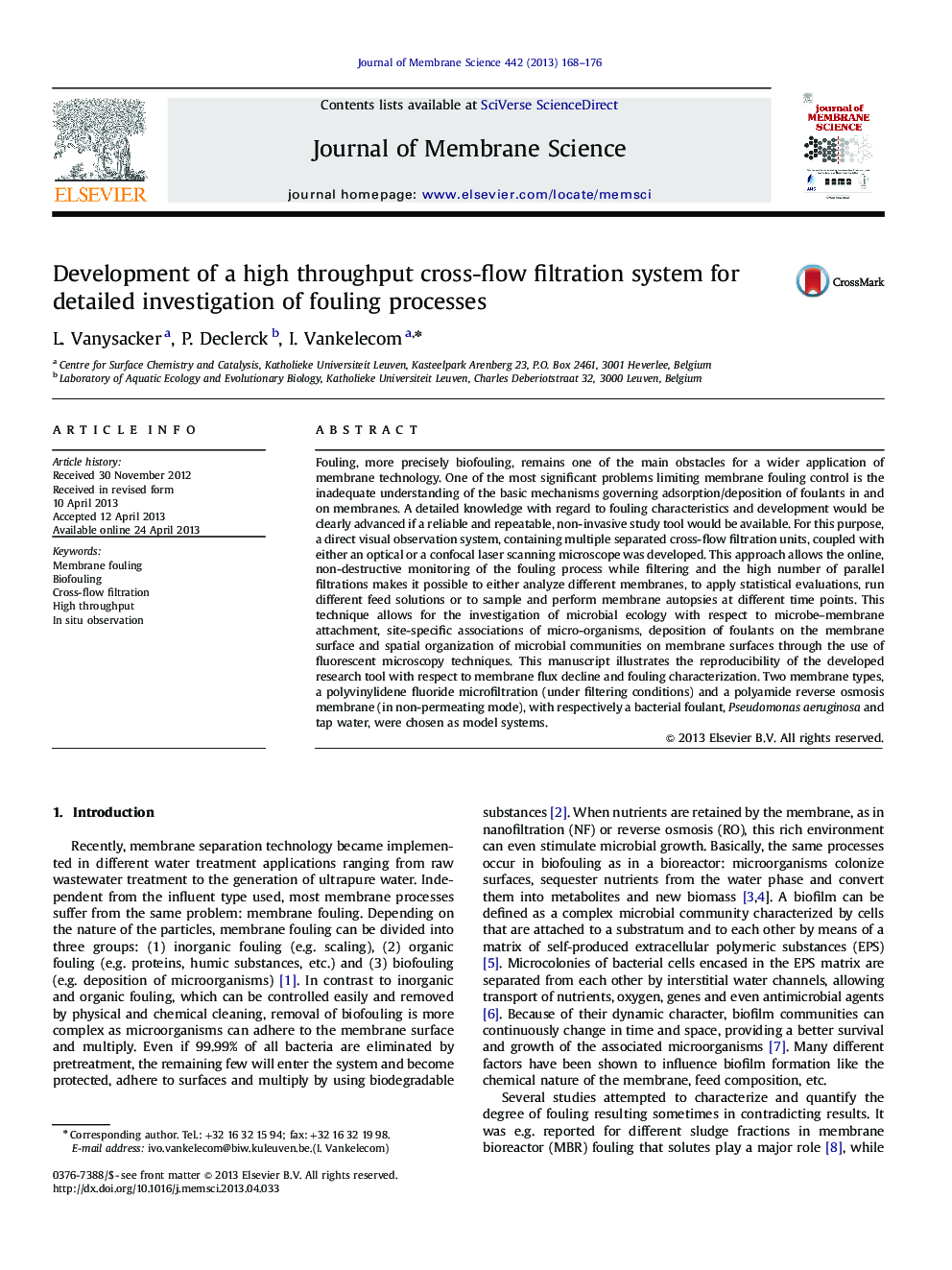| کد مقاله | کد نشریه | سال انتشار | مقاله انگلیسی | نسخه تمام متن |
|---|---|---|---|---|
| 634164 | 1456057 | 2013 | 9 صفحه PDF | دانلود رایگان |

• A simple high-throughput online fouling monitoring system is presented.
• The presented system allows parallel filtration over 6 membranes with high reproducibility and high quality fouling imaging.
• The results prove that the system can be used as an efficient tool for fouling studies.
• The system was used for testing membranes for MBR and RO applications and monitoring of fouling.
Fouling, more precisely biofouling, remains one of the main obstacles for a wider application of membrane technology. One of the most significant problems limiting membrane fouling control is the inadequate understanding of the basic mechanisms governing adsorption/deposition of foulants in and on membranes. A detailed knowledge with regard to fouling characteristics and development would be clearly advanced if a reliable and repeatable, non-invasive study tool would be available. For this purpose, a direct visual observation system, containing multiple separated cross-flow filtration units, coupled with either an optical or a confocal laser scanning microscope was developed. This approach allows the online, non-destructive monitoring of the fouling process while filtering and the high number of parallel filtrations makes it possible to either analyze different membranes, to apply statistical evaluations, run different feed solutions or to sample and perform membrane autopsies at different time points. This technique allows for the investigation of microbial ecology with respect to microbe–membrane attachment, site-specific associations of micro-organisms, deposition of foulants on the membrane surface and spatial organization of microbial communities on membrane surfaces through the use of fluorescent microscopy techniques. This manuscript illustrates the reproducibility of the developed research tool with respect to membrane flux decline and fouling characterization. Two membrane types, a polyvinylidene fluoride microfiltration (under filtering conditions) and a polyamide reverse osmosis membrane (in non-permeating mode), with respectively a bacterial foulant, Pseudomonas aeruginosa and tap water, were chosen as model systems.
Journal: Journal of Membrane Science - Volume 442, 1 September 2013, Pages 168–176